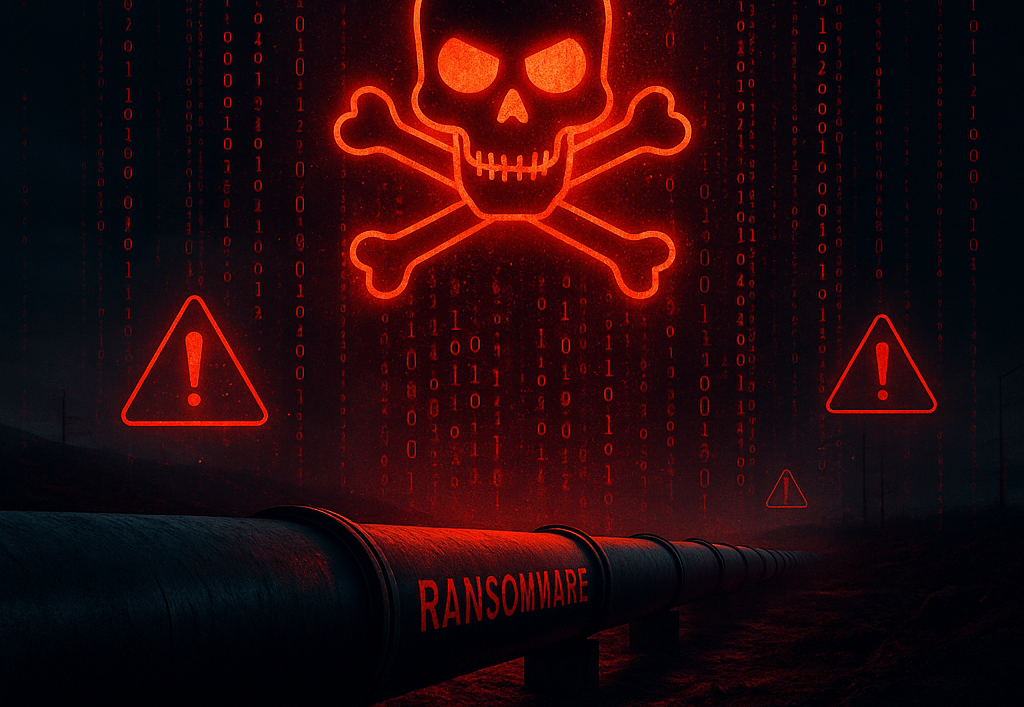The Colonial Pipeline Ransomware Attack — How a Cybercriminal Group Halted U.S. Fuel Supply
BLOGS


In May 2021, Colonial Pipeline, the largest fuel pipeline operator in the United States, experienced a crippling ransomware attack that disrupted fuel supplies across the East Coast. This incident became one of the most high-profile examples of cybercrime targeting critical infrastructure, highlighting the devastating real-world consequences such attacks can have on everyday life.
The attackers were identified as a cybercriminal group known as DarkSide, notorious for their ransomware campaigns. They gained access to Colonial Pipeline’s network through a compromised VPN account that, critically, did not have multi-factor authentication enabled. This weak point in security allowed the hackers to breach the company’s defenses with relative ease. Once inside the network, the attackers moved laterally, exploring internal systems and eventually deploying ransomware that encrypted data on vital operational systems. The ransomware also deleted backups, effectively preventing the company from restoring their systems quickly.
In response to the attack, Colonial Pipeline made the difficult decision to shut down its entire pipeline operations to prevent further damage and contain the ransomware’s spread. This shutdown led to immediate and widespread fuel shortages, panic buying, and a spike in gasoline prices across several states. The attack caused a ripple effect that disrupted transportation and supply chains, showing how digital attacks can have a profound impact on physical infrastructure and daily life.
Colonial Pipeline ultimately decided to pay a ransom of approximately 75 Bitcoins — valued around $4.4 million at the time to the hackers in hopes of restoring their operations. While paying ransom remains controversial, the company argued it was necessary to mitigate the crisis swiftly. Later, U.S. law enforcement managed to recover a portion of the ransom, signaling growing government capability and resolve to combat ransomware groups. The incident prompted a flurry of government actions aimed at improving cybersecurity in critical infrastructure sectors, as well as debates about ransom payments and cyber policy.
Technically, the attack exploited a VPN account that lacked adequate protection, emphasizing the danger of weak remote access security. The attackers’ ability to move laterally was aided by insufficient network segmentation between IT systems and operational technology (OT) environments that control physical infrastructure. DarkSide ransomware’s destructive nature was evident in its encryption of essential files and deletion of backups, making recovery difficult without paying the ransom. Furthermore, the attackers employed double extortion tactics, threatening to publicly release stolen data if their demands were not met. This added pressure complicates incident response and recovery.
This attack taught the cybersecurity community many critical lessons. First, enforcing multi-factor authentication on all remote access points is vital to preventing unauthorized entry. Second, properly segmenting networks, especially separating IT from OT systems, can limit the spread of ransomware and reduce potential damage. Third, maintaining regular, secure backups stored offline is essential for recovery without yielding to ransom demands. The Colonial Pipeline incident also underlined the need for comprehensive incident response planning tailored to ransomware scenarios, particularly for critical infrastructure operators. Finally, the international nature of such cybercrime groups calls for global cooperation among law enforcement and cybersecurity professionals to effectively disrupt their operations.
